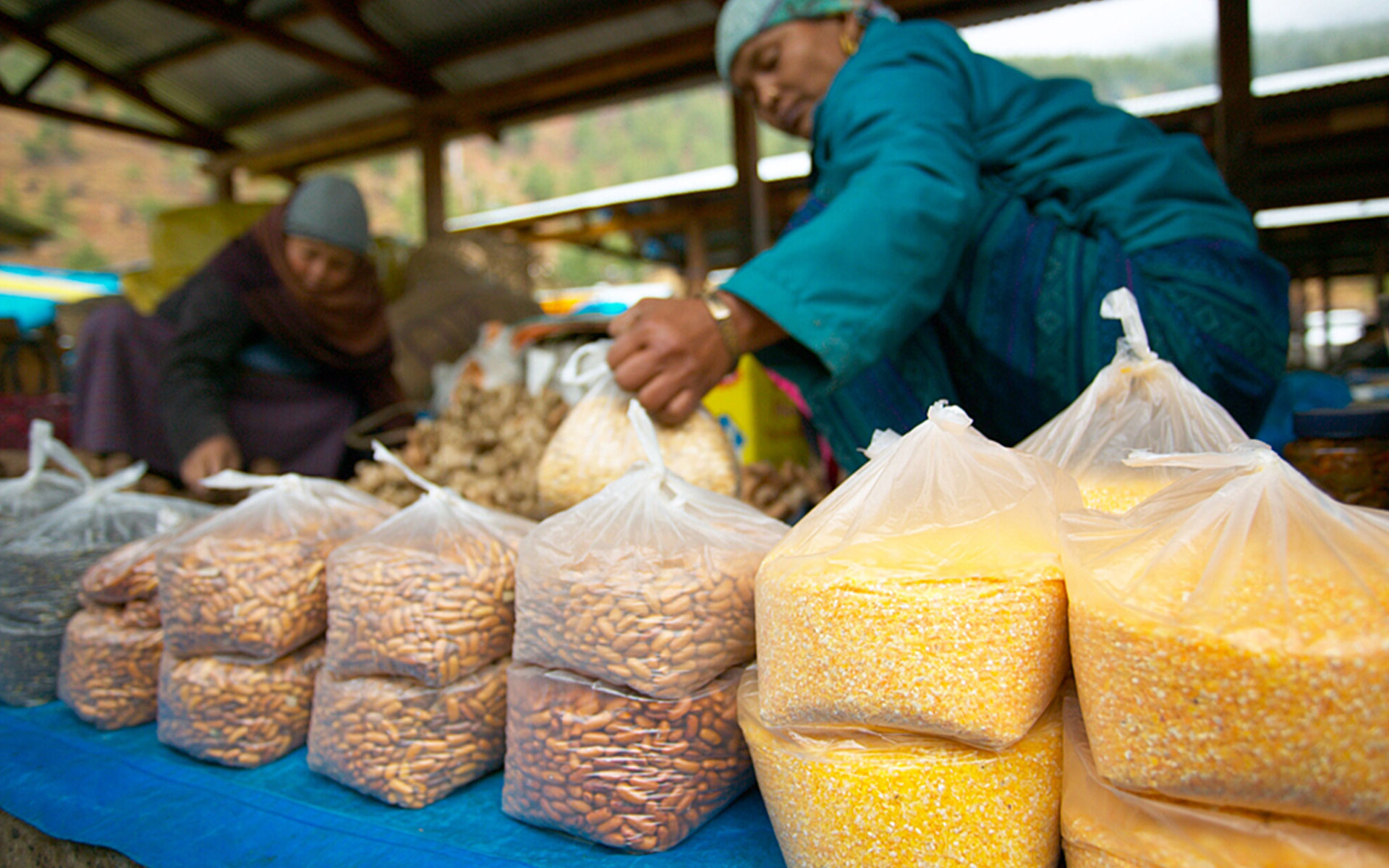Bhutan is one of smallest and least developed economies in the world. About 12% of Bhutan’s population lives in poverty. And the average life expectancy is 67 years as of 2012 survey. Bhutan’s economy is largely based on agriculture and forestry. 60% of country’s population depend their livelihood on subsistence farming and livestock rising.
Bhutan has its own currency system. Its currency is called Ngultrum, which is pegged at parity with Indian Rupees. Ngultrum is subdivided into 100 chetrums. Royal Monetary Authority of Bhutan is the minting authority of the country.
Major infrastructure and socio-economic developmental activities are financed by external aid. The fiscal deficit is high, balance of payment situation is weak, public debt is mounting and foreign exchange reserves are difficult to sustain as it is not built through exports. Major boost to economic development has come from external donor financing and large-scale hydropower projects. Bhutan has installed capacity of 1488 MW of hydroelectric power and annually generates about 7150 million units of electricity and about 90% of this is exported to India.
The economic development of the country is guided by the overarching philosophy of Gross National Happiness. Economic development cannot be undertaken at the cost of degradation of natural environment and nonrenewable natural resources; it should preserve and promote tradition and culture; it should conserve environment and foster good governance.
Bhutan has its own currency system. Its currency is called Ngultrum, which is pegged at parity with Indian Rupees. Ngultrum is subdivided into 100 chetrums. Royal Monetary Authority of Bhutan is the minting authority of the country.
Major infrastructure and socio-economic developmental activities are financed by external aid. The fiscal deficit is high, balance of payment situation is weak, public debt is mounting and foreign exchange reserves are difficult to sustain as it is not built through exports. Major boost to economic development has come from external donor financing and large-scale hydropower projects. Bhutan has installed capacity of 1488 MW of hydroelectric power and annually generates about 7150 million units of electricity and about 90% of this is exported to India.
The economic development of the country is guided by the overarching philosophy of Gross National Happiness. Economic development cannot be undertaken at the cost of degradation of natural environment and nonrenewable natural resources; it should preserve and promote tradition and culture; it should conserve environment and foster good governance.


